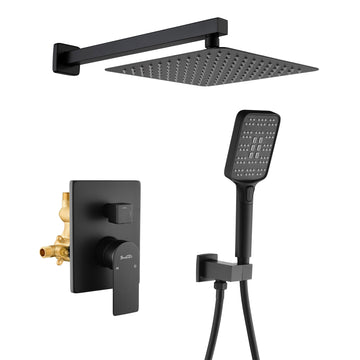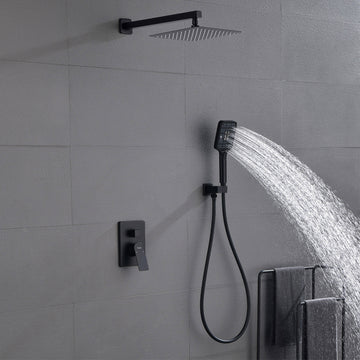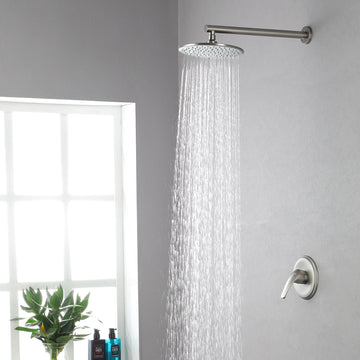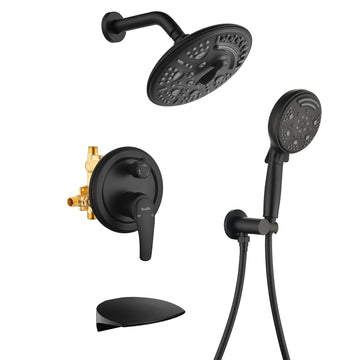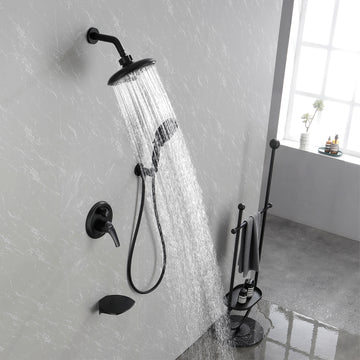Categories
Recent Articles
-
Unlocking the Secret to a Lasting Shower: Choosing the Right Concealed Valve Cartridge for Hard Water December 17, 2025
-
Elevate Your Bathroom Experience: Premium Faucets for Style and Functionality 🚿✨ December 12, 2025
-
The Pot Filler Faucet: Luxury Must-Have or Practical Powerhouse? November 25, 2025
The Ultimate Guide to Faucet Finishes: Durability vs. Aesthetics
When it comes to faucets, the choice of base material (typically brass or stainless steel) is driven by its strength and longevity. However, exposure to air and water can lead to corrosion, which can affect both appearance and longevity. This is where surface treatment plays a crucial role. In addition to enhancing visual appeal, these treatments protect against wear, corrosion, and ensure water quality.
Common Surface Treatment Techniques as follow,
1.Electroplating
Electroplating is the most common method for faucet surface treatment, particularly for brass. High-quality brands use a three-layer electroplating process:
① Copper base layer: Improves adhesion.
② Nickel layer: Enhances corrosion and wear resistance.
③ Chrome top layer: Adds hardness and a mirror-like finish.
Key Insight:
Beware of marketing gimmicks: Some brands claim to use ""five-layer plating,"" but this often masks a poor-quality base material. Choose a reputable manufacturer that adheres to 24-hour salt spray testing standards.
* Neutral salt spray test (24 hours, level 9): Meets international durability benchmarks. * Acidic Salt Spray Test (24 hours, Level 6 or higher): Guaranteed to be rust-free for over 5 years.
Quick Quality Check:
* Appearance: High-quality electroplating, with a flawless mirror finish and no bubbles.
* Touch: Fingerprints on high-grade chrome surfaces should instantly disappear.

2. Brushed (Satin) Finish
Brushed is a common finish on stainless steel faucets, creating a fine, linear texture through grinding and polishing. Benefits include:
Elegant matte appearance: Hides fingerprints and water stains.
Styles:
Brushed + Sealed: A basic, corrosion-resistant satin finish.
Brushed + PVD Coating: Offers richer colors (e.g., gold, bronze) and superior durability. (Higher cost, but higher quality.)
3. Powder Coating (Baked Lacquer):
A multi-layered coating process that cures at high temperatures, offering the following characteristics:
Piano-like gloss: Ideal for stylish black and white faucets.
Fingerprint-resistant: Smoother than chrome plating. Durability Considerations: Not as scratch-resistant as electroplated finishes; chips will show obvious damage.
4. Porcelain Enamel
A niche process in which a low-melting-point ceramic powder is melted onto metal in a kiln.
Pros:
* Vivid, vibrant colors.
* Extremely hard (scratch-resistant).
Cons:
* Fragile—prone to cracking on impact.
* High production costs = higher price.
From the brilliance of electroplating to the understated elegance of brushed metal, each finish offers a balance of beauty and practicality. When choosing a faucet:
✔ Prioritize certified electroplating for extended life.
✔ Consider maintenance (e.g., matte vs. glossy finish).
✔ Choose the right finish for your style and usage needs.
Invest wisely—the surface of your faucet is its first line of defense!
Best Sellers
-
Black
-
Gold
-
Brushed Nickel
-
Black
-
Gold
-
Brushed Nickel
-
Matte Black
-
Brushed Nickel
-
Brushed Gold
-
Matte Black
-
Brushed Nickel
-
Brushed Gold
-
Brushed Gold
-
Brushed Nickel
-
Matte Black
-
Brushed Gold
-
Brushed Nickel
-
Matte Black
-
Matte Black
-
Brushed Gold
-
Polish Chrome
-
Brushed Nickel
-
Matte Black
-
Brushed Gold
-
Polish Chrome
-
Brushed Nickel
-
Brushed Gold
-
Brushed Nickel
-
Matte Black
-
Brushed Gold
-
Brushed Nickel
-
Matte Black
-
Matte Black
-
Brushed Nickel
-
Brushed Gold
-
Matte Black
-
Brushed Nickel
-
Brushed Gold
-
Matte Black
-
Brushed Gold
-
Brushed Nickel
-
Matte Black
-
Brushed Gold
-
Brushed Nickel



















